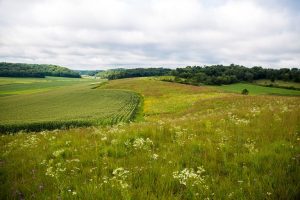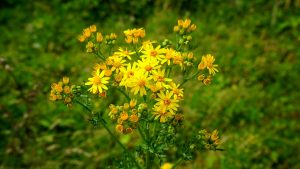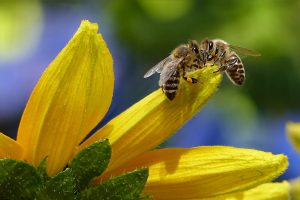Home » Community Development » Sauk County Pollinator Protection Resources » Protect Pollinators At Home
Protect Pollinators At Home
1. Assess Your Property for Quality Pollinator Habitat

Access a free, online tool to assess the quality of the pollinator habitat at your location. This tool is designed to help you identify opportunities to support pollinators whether you have a single raised bed or many acres. The Wisconsin Online Pollinator Habitat Assessment takes less than 20 minutes to complete. It’s a simple evaluation that can be completed on a smartphone or tablet as you walk around a garden or property and observe features like the number of species of blooming flower and quality of pollinator nesting habitat.
2. Create Ideal Habitat for Pollinators
Pollinator planting guides can enhance your property. The US Fish and Wildlife Service’s Attracting Pollinators to Your Garden is a great start!  There are many pollinator guides available and most are created specifically for the region or state you live it. Sauk County is in the Eastern Broadleaf Forest Guide. This comprehensive guide will identify pollinators in your area and provide tips to attract specific pollinators to your location. You can also enhance your pollinator nesting sites by maintaining a small, undisturbed patch of well-drained bare or sparsely vegetated ground.
There are many pollinator guides available and most are created specifically for the region or state you live it. Sauk County is in the Eastern Broadleaf Forest Guide. This comprehensive guide will identify pollinators in your area and provide tips to attract specific pollinators to your location. You can also enhance your pollinator nesting sites by maintaining a small, undisturbed patch of well-drained bare or sparsely vegetated ground.
3. Reduce Misuse of Pesticides
While it might be tempting to spray for pests, using pesticides can kill more than the target pests. Some pesticide residues can kill pollinators for several days after the pesticide is applied. Pesticides can also kill natural predators, which can lead to even worse pest problems.
Additional considerations for pest management:
- Try removing individual pests by hand (wear garden gloves)
- Encourage native predators (for example, praying mantids) with a diverse garden habitat
- Expect and accept a little bit of pest activity

- Consider integrated pest management for your yards and gardens
- If you must use a pesticide:
- only use it when you have a pest problem (not as a preventative);
- choose one that is effective for the target pest and the least toxic to non-pest species;
- use the lowest effective application rate;
- avoid applying when wildflowers are in bloom;
- apply it in the late afternoon or evening when most pollinators are not as active; and
- use liquid sprays or granules, rather than dusts, to avoid it drifting to other plants.




